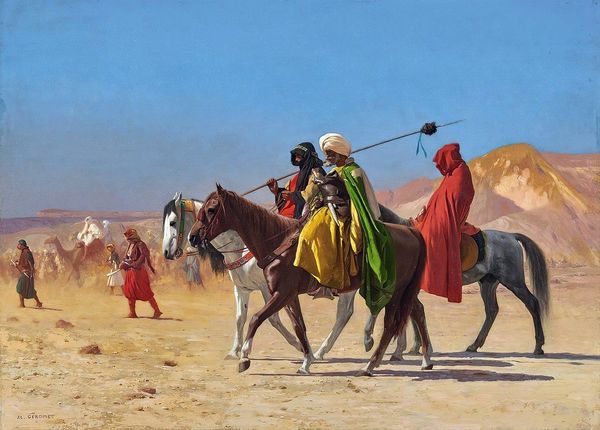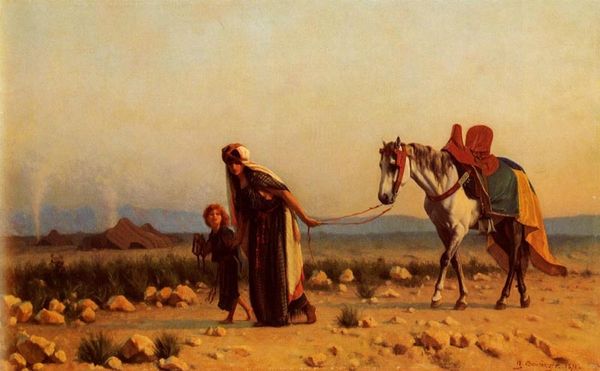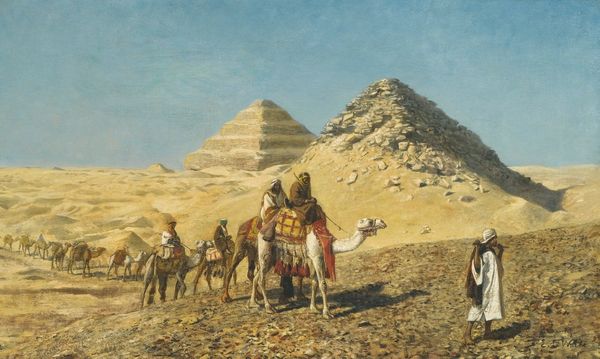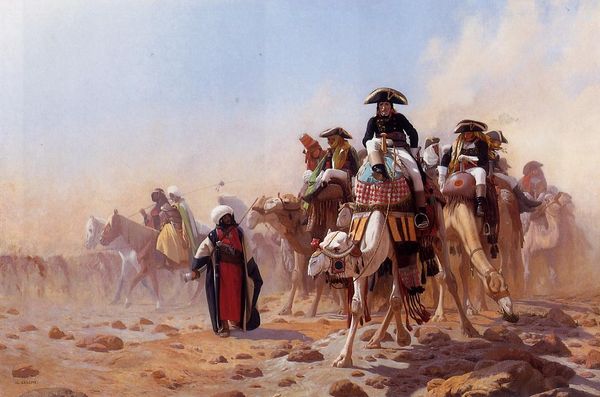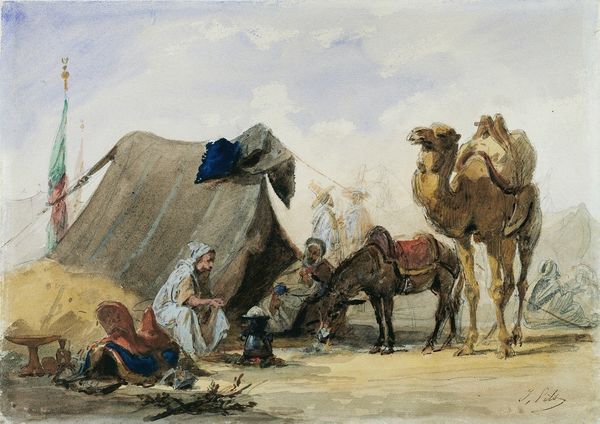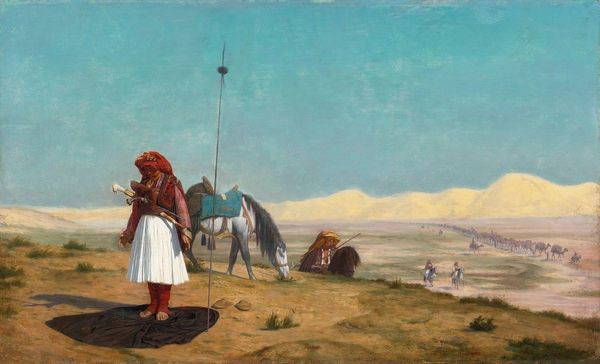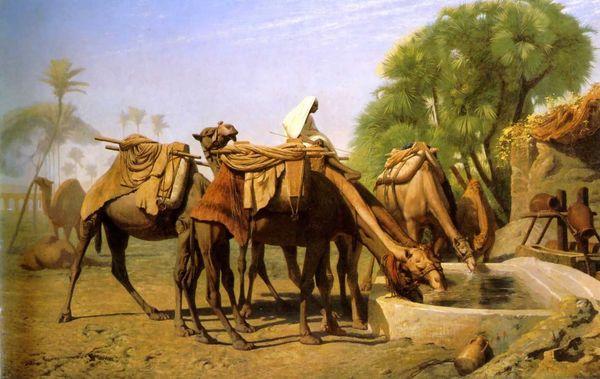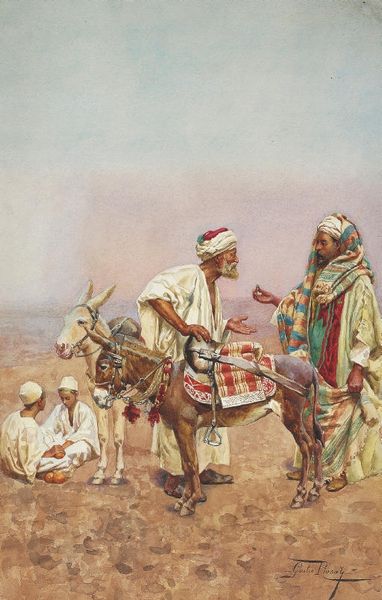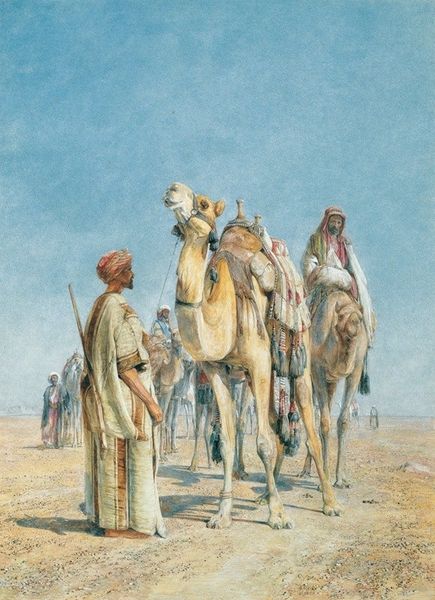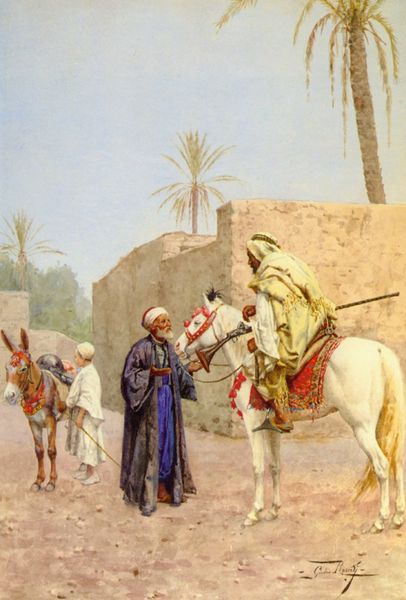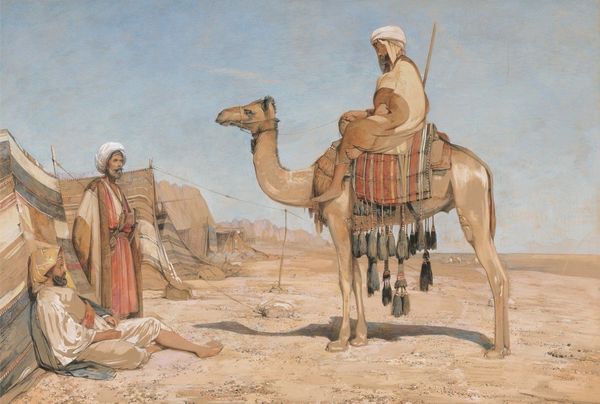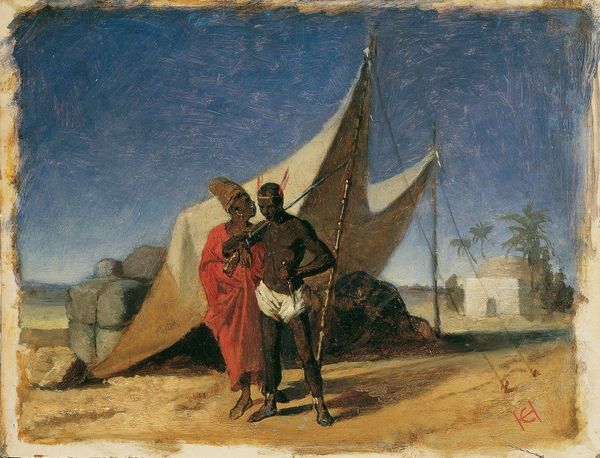
painting, gouache, oil-paint
#
gouache
#
narrative-art
#
fantasy art
#
painting
#
gouache
#
oil-paint
#
landscape
#
figuration
#
oil painting
#
orientalism
#
genre-painting
#
history-painting
#
academic-art
#
watercolor
Copyright: Public domain
Curator: Gustave Boulanger’s "It's the Emir," painted in 1870, invites us into a world steeped in the visual language of Orientalism. Editor: Ooh, I love that shimmering light! There's something both serene and theatrical about it. Like a dream… or a mirage, maybe? Curator: The scene is indeed bathed in that specific golden light characteristic of Orientalist paintings. Boulanger skillfully uses that glow to enhance the figures' costumes. The composition is carefully arranged to present a romanticized vision of the "East." What feelings arise for you, looking at it? Editor: A touch of unease, if I'm honest. All this visual richness, yet I’m stuck wondering whose story is really being told? Is it a respectful portrait or a romantic fantasy cooked up for European audiences? It has such a strong narrative… or should I say, staged narrative? Curator: The symbolism here aligns with those narrative conventions. Note the white horse – a consistent trope in orientalist painting – a visual marker indicating the Emir's high status, reinforcing power dynamics. Editor: The Emir certainly holds the central position, quite literally elevated! Everyone around him seems caught in a perpetual state of service. Dogs, attendants… all orbiting around his presumed glory. And this makes me ponder, what elements would indigenous painters depict, and how might those versions subvert the visual rhetoric? Curator: That is a central debate in modern readings of such images! Works of this type reveal much about 19th-century European cultural biases and their selective vision of North Africa. Editor: Right. It’s beautiful but undeniably shaped through a Western lens, tinged with a longing for the exotic while perpetuating a hierarchical viewpoint. Curator: It leaves me contemplating on the continuity of power, and how artistic representations either reinforce or, less frequently, challenge existing social frameworks. Editor: Yeah. A painting that certainly prompts questions beyond its visual splendor, inviting us to critically engage with art history itself.
Comments
No comments
Be the first to comment and join the conversation on the ultimate creative platform.
